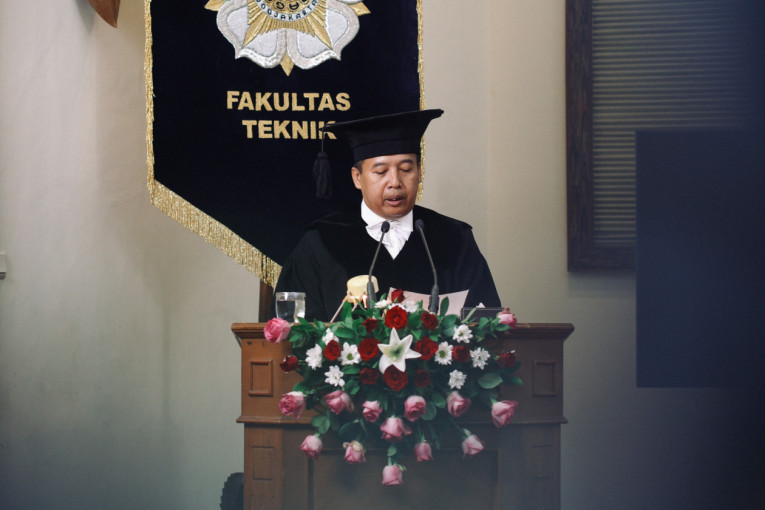
Indonesia’s geographical location at the convergence of three major tectonic plates makes it prone to geological hazards. Placing humans and their cultural products in safe areas is the primary key to reducing disaster risks.
According to Professor Wahyu Wilopo, regional planning based on geological hazard information is necessary. This approach aims to avoid or minimize casualties, economic losses, and socio-cultural impacts while ensuring the sustainability of development.
“Detailing subsurface conditions through geological mapping, geophysical surveys, and drilling will greatly assist in designing infrastructure per the geological load-bearing capacity,” he expressed on Tuesday, October 17.
Professor Wilopo stated this during his inauguration as a professor of environmental geology at the UGM Faculty of Engineering.
In his inaugural speech titled “Environmental Geology to Support Sustainable Development,” he emphasized the necessity of this approach considering the ongoing Earth’s dynamic processes and increasing population pressure.
“The growing population and extensive exploitation of natural resources will trigger various environmental issues, leading to hazards that threaten humanity. Furthermore, the Earth’s continuous dynamics will also affect the occurrence of disasters,” he said.
Professor Wilopo suggested that the growing population and economic pressures might lead many people to settle or conduct activities in hazardous areas, thus increasing disaster risks.
Hence, he stressed the importance of educating and raising awareness among the populace about the significance of safety from natural threats or those induced by human activities.
“Geohazard studies are essential in areas to be developed, including their surrounding regions, be it for residential, agricultural, industrial, or mining purposes,” he added.
Consequently, mitigation measures could be taken to eliminate or minimize the potential hazards. Effective and efficient mitigation involves engaging all stakeholders and community members.
He pointed out that disaster mitigation technology and early warning systems need not be very advanced. Still, they should be appropriate and targeted based on available human resources, infrastructure, economic conditions, and the social and cultural context of the community.
The most crucial aspect is ensuring the functionality and sustainability of such technology so that the country can robustly face disasters when its people are resilient in dealing with calamities.
He acknowledged that global climate change is inevitable, but everyone can contribute to slowing down the process and minimizing its impact.
Therefore, using environmentally friendly energy resources and being prepared to adapt to these changes in all aspects of life is crucial to saving the planet.
“The utilization of natural resources must be proportional to their formation. Thus, efforts are needed to minimize direct exploitation by recycling existing materials or seeking alternative materials with similar functions and utility,” the professor concluded.
Author: Agung Nugroho

